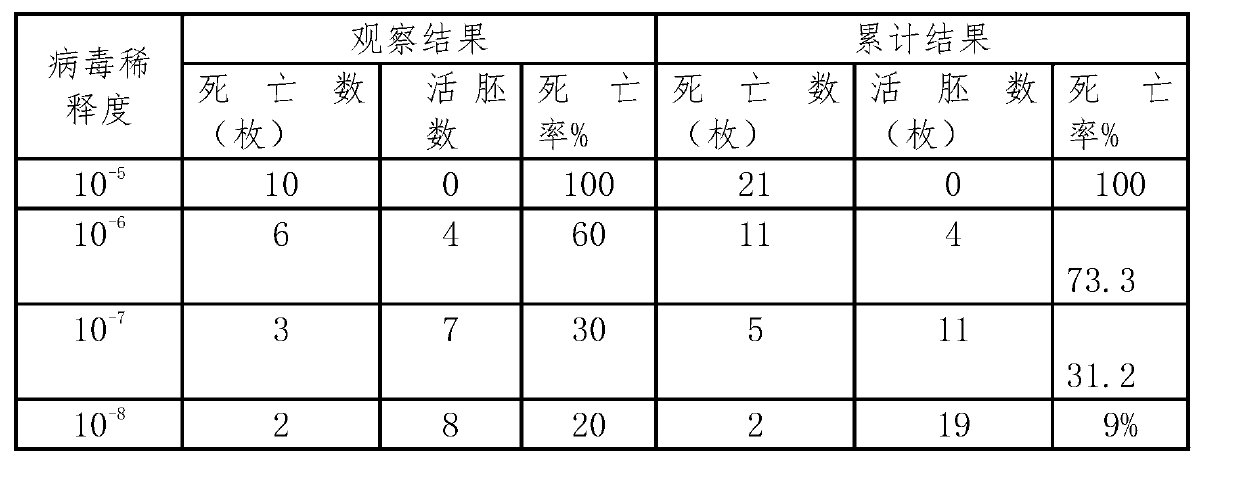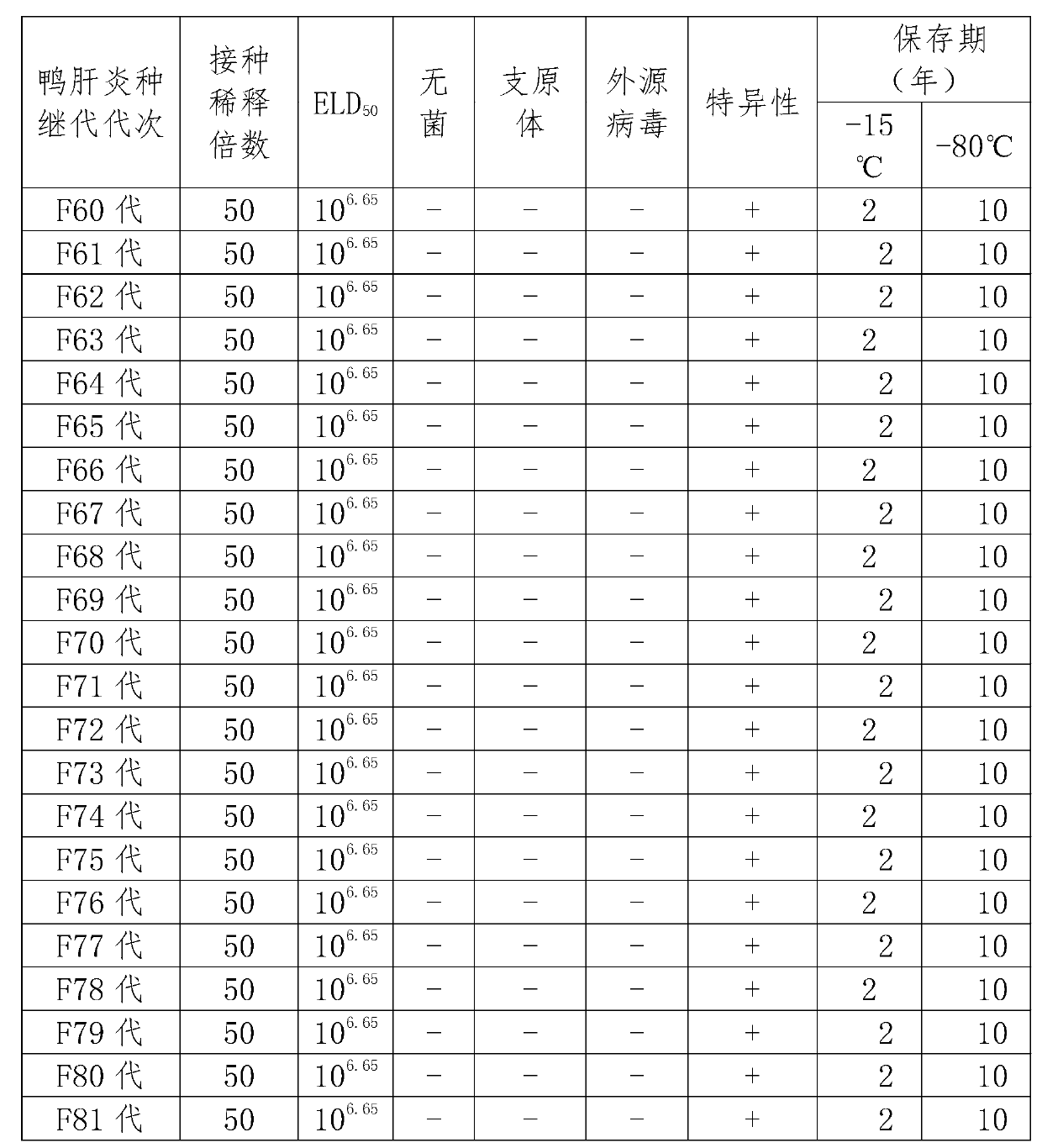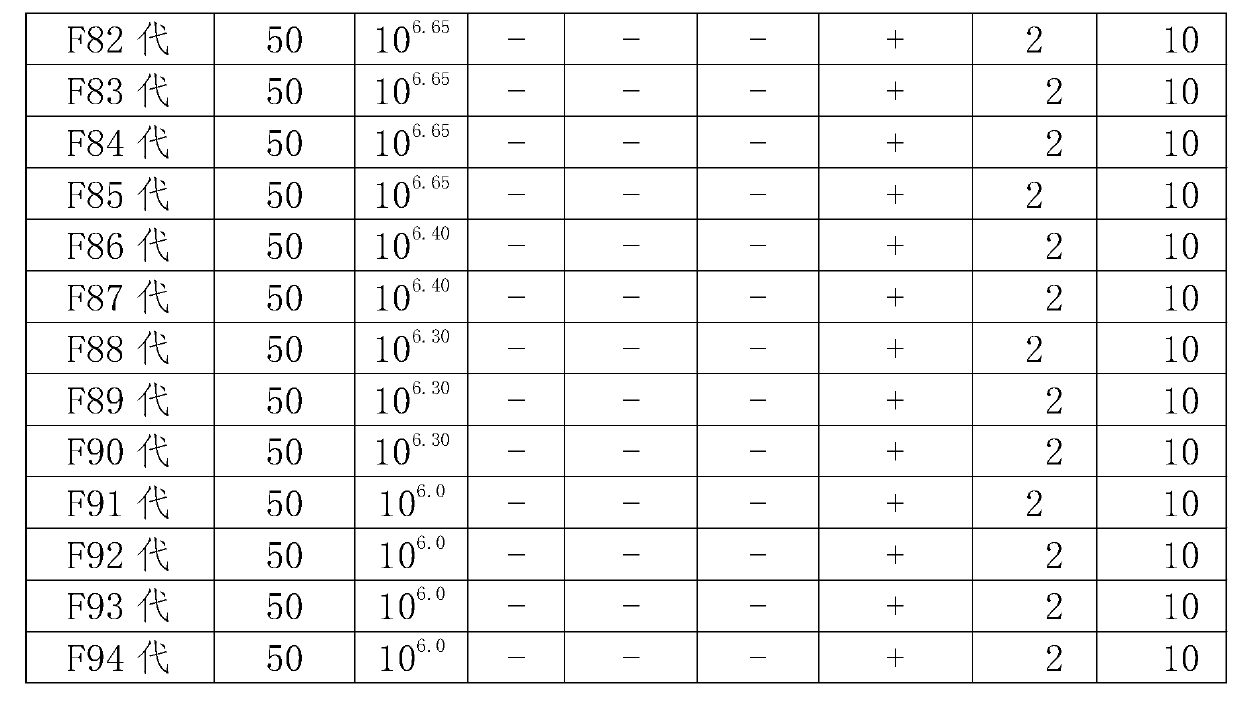Lentogenic CH60 strain of duck virual hepatitis virus and attenuated live vaccine thereof
A duck viral hepatitis and live vaccine technology, which is applied in antiviral agents, virus/bacteriophage, antibody medical components, etc., can solve the problems of long development cycle and high development cost, and achieve good safety and good immunogenicity
- Summary
- Abstract
- Description
- Claims
- Application Information
AI Technical Summary
Problems solved by technology
Method used
Image
Examples
Embodiment 1
[0012] Example 1 Cultivation of Duck Viral Hepatitis Virus Attenuated CH60 Strain
[0013] 1. Experimental design
[0014] The isolated CH virus strains were selected and transmitted continuously in 9-day-old chicken embryos, with 10 embryos per generation, and the embryo body lesions, death time and mortality of each generation of chicken embryos were observed. from F 60 -F 85 Generational determination of ELD for each generation 50 And the safety and stability of each generation of strains. Until obtaining the poisonous seeds that meet the production requirements.
[0015] 2. Biosafety matters
[0016] The laboratory is equipped with biological safety cabinets, aseptic operation rooms, and high-pressure sterilization cabinets for waste and dirt.
[0017] 3. Materials
[0018] 3.1 Strain DHV CH strain
[0019] In 1990, Sichuan Agricultural University isolated and identified the diseased ducklings in a duck farm where duck viral hepatitis occurred in Sichuan Province, ...
Embodiment 2
[0051] Example 2 Establishment of Seed Batches of Attenuated CH60 Strain of Duck Viral Hepatitis
[0052] 1. Experimental design
[0053] Inoculate the allantoic cavity of 9-10-day-old SPF chicken embryos with the CH60 virus seed, 0.2ml per embryo. 24 hours after inoculation, eggs were illuminated once every 4 hours, and chicken embryos that died within 36 to 48 hours after inoculation were selected to make virus liquid. Into the production of seed batches. Indicate the name of the strain, the date of freeze-drying, and the loading amount. Store at -15°C or -80°C.
[0054] 2. Biosafety matters
[0055] The laboratory is equipped with a biological safety cabinet, an aseptic operation room, and an autoclave disinfection cabinet for waste and dirt. The experimental animals are equipped with a healthy animal room, an immune animal room, and an animal room for attacking strong poisons.
[0056] 3. Materials
[0057] 3.1 SPF chicken eggs were purchased from Shandong SPAFAS.
...
Embodiment 3
[0091] Example 3 Production process of duck viral hepatitis attenuated live vaccine (CH60 strain)
[0092] 1. Preparation of duck viral hepatitis attenuated virus (CH60 strain) antigen
[0093] ①Inoculation: Inoculate 0.2ml of the virus seed for production into the allantoic cavity of each embryo, seal the pinhole after inoculation, and continue incubation at 37°C without turning the eggs.
[0094] ②Incubation and observation After 24 hours of inoculation, the eggs were illuminated every 4 hours until 96 hours. Take chicken embryos that died within 24 to 96 hours and cool them at 2 to 8°C.
[0095]③Harvest Chick embryos that have been cooled for 4 to 24 hours, use aseptic surgery to take chorioallantoic membranes, fetuses, embryo fluid and amniotic fluid, and mix each of them into a group, and place them in a sterilized bottle. While harvesting, chicken embryos should be checked one by one. If the fetus is corrupt, the embryo fluid is turbid, and any suspected contamination ...
PUM
 Login to View More
Login to View More Abstract
Description
Claims
Application Information
 Login to View More
Login to View More - R&D
- Intellectual Property
- Life Sciences
- Materials
- Tech Scout
- Unparalleled Data Quality
- Higher Quality Content
- 60% Fewer Hallucinations
Browse by: Latest US Patents, China's latest patents, Technical Efficacy Thesaurus, Application Domain, Technology Topic, Popular Technical Reports.
© 2025 PatSnap. All rights reserved.Legal|Privacy policy|Modern Slavery Act Transparency Statement|Sitemap|About US| Contact US: help@patsnap.com



